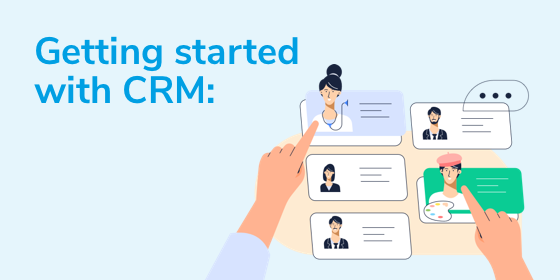It’s the candidate experience, stupid! Why candidates should be placed at the heart of the journey.

If we’re buying a car, for instance, we don’t expect to have to explain our needs to three different agents as we move through the purchasing system. If we do, we decide pretty quickly that we are NOT valued customers for this particular brand, and we go elsewhere.
Don’t get me wrong. Buying your favorite chocolate bar doesn’t have to be this complex—but brand perception and your taste bud preferences will clearly have a part to play in the decision. And when it comes to major purchases, when there will be multiple engagements before you finally sign a contract, each interaction will be critical to your brand perception.
Change your mindset.
A candidate’s journey is similar to a consumer embarking on a significant buying decision i.e. house, luxury holiday, car, etc. Companies that create a candidate-centric journey will ensure that each touchpoint with the candidate is likely to be relevant, timely, and most importantly, positive.
Awareness of a brand is the first hook – before attraction is even a consideration. This touchpoint is likely to occur through recruitment marketing or maybe employee advocacy; it’s worth noting that of these two, a candidate is three times more likely to trust the existing employee than the brand.
Key learning: leverage employees to generate awareness through an authentic voice whenever possible.
Take care of your Employer Brand.
The candidate may be perfectly happy in their current role and have no desire to make a career change, but they are now beginning to formulate a preference for the type of company they wish to work for. This is where your Employer Brand becomes key; a USP even. Your Employer Brand is a cocktail of ‘what your company stands for i.e. culture, mission, etc’ and ‘the type of candidate that you are looking for/wish to attract’.
This emphasizes the importance of promoting your brand to aid attraction initiatives with target personas. Your employees know better than anyone the ‘right fit’ for the business. An engaged team of ambassadors will deliver authentic insights, thus improving the candidate experience through an increase in trust.
Key learning: align your EVP with your ERP to drive employee engagement and create authentic brand messaging to increase the number of referred applications.
Optimize your recruiting process.
Many journeys begin and a significant number 60% (TalentLyft) end before an application form is even completed; which re-emphasizes the importance of the whole experience being intuitive for the candidate. This journey needs to be consistent, relevant, and authentic; a candidate is likely to have 50+ touchpoints before an interview. Let’s not forget, the journey that this candidate is taking with your organization could become the most important journey of their career, and for you as a Recruiter, could be a future employee that will add significant value to the business.
Key learning: this is why the candidate-centric approach is imperative; every exec/specialist/STEM hire is competitive.
Make it unique and personal.
By tracking interactions with this candidate i.e. which campaigns they have been involved in, content opened and viewed, activity on your careers page, and of course, every touchpoint with different stakeholders will help to build out a data-rich candidate profile; now we can personalize. Personalization is what consumers now expect – it makes us feel valued; the candidate experience should be no different. The modern-day candidate expects personalization at scale, they expect to have an omni-channel experience and they expect to have a seamless application process.
Key learning: well-nurtured candidates are statistically a much better fit for a business than reactive applications via job boards.
Learn from Marketing Tech.
It is predicted that in the future, 70% – 80% of the recruiting process will take place in Candidate Relationship Management (CRM). The story so far makes a lot of sense – but if we now look at roles per recruiter, the number of candidates required for positions, and volumes of applications, suddenly it is a numbers game that struggles to compete with the hours in a day and more importantly, business demands. So, what can be done to help these recruiters deliver the very best candidates to hiring managers?
Key learning: embrace recruitment tech and plan for the future with it
The recruitment tech offerings are parallel with that available for Customer Experience. Organizations invest significant sums to ‘differentiate’ their customer experiences – so with talent now deemed crucial to business performance, why are companies reluctant to invest heavily in recruitment tech? Mindset is key, as is a budget priority and the supporting business case.
Recruiting teams are skilled individuals. Use tech to harness their candidate relationship building skills. Empower Employer Branding teams to get relevant content to the right candidates through the appropriate channels at the best time. A fully integrated Talent Relationship Platform will address all key components of the recruiting process. The recruiting world of tomorrow will be shaped by technology. Digitalize your candidate experiences to create a competitive advantage in winning the best talent for your business.
Why the candidate experience matters.
87% of candidates (PageUp) say that a great experience will help them change their entire perception of an organization, 95% will apply again (KellyServices.co) and 88% (KellyServices.co) will increase their own spend with that company. By creating a ‘great employer brand’, organizations can expect to see an uplift of 50% in qualified applicants and a 50% reduction in avg cost per hire (Workable). Creating the ‘great brand’ is only a small step, actually delivering it is challenging but – this is where your employees can help.
By delivering a consistent, personalized, and ultimately a positive candidate experience, organizations will place themselves in a pole position to attract and then win the best talent for their business. The experience is naturally going to change for candidates who are applying for senior/exec/STEM roles vs volume hires but what doesn’t change, is the need for a consistent and positive experience for every candidate.
Turn recruitment into a team sport.
Your employee networks are on average 10 times the size of your brand’s and their shares (as more authentic) traditionally see a 2 times more click-through rate vs brand pushed content (LinkedIn). Referred hires are traditionally a fraction of the cost of hires than those sourced through other channels; what’s more – these candidates tend to stick around a lot longer as well so help to reduce attrition. Crucially, 88% of employers state that referrals are the #1 source for above-average candidates (Oracle) and that a similar figure see hires from this channel as the strongest ROI.
Key learning: leverage your employees; target 25%+ of hires via employee referral
By deploying Talent Relationship technology, your recruiting team will be empowered to deliver a differentiated and ‘candidate winning’ experience, helping your organization to stand out from the noise and attract the best talent.
Not getting it right:
As of today 75% of candidates never hear back after submitting an application (Workable). Whilst, not every application will result in an interview from a brand perspective, a response of some kind (even if automated) is important. Communication is key. 42% of disgruntled candidates would never apply for a role at that organization again, whilst 72% will tell others not to apply and around 64% will go as far as refusing to buy/invest in said companies products/services; these statistics highlight the hugely detrimental effect a poor experience can have on a company brand (Talentlyft).
My conclusion:
Invest in Talent Relationship tech – there is no other way to put this more bluntly. By identifying the right technology, the potential gains for multiple stakeholders, internally and externally are huge. Ultimately the objective is to create a differentiated candidate experience, but additional benefits include:
- Improved brand perception attracting the best talent
- Increase in employee engagement and uplift in culture quality
- Improved candidate quality resulting in stronger business performance output
- Decrease in attrition and consequently improved customer experiences
- Increase in hires via referral by building an ambassador culture
- The decrease in cost and time to hire
- Positive impact on business performance and recruitment spend
Traditionally organizations refer to a ‘funnel’ model; this is legacy and will require repetition to find candidates for specific roles – vacancy focussed. Create an organic ‘wheel’ model will place the candidate at the heart of the process, improving experiences for all stakeholders and help your business to engage with and ultimately win, the best talent for your business. Interested in learning more?





.png)


